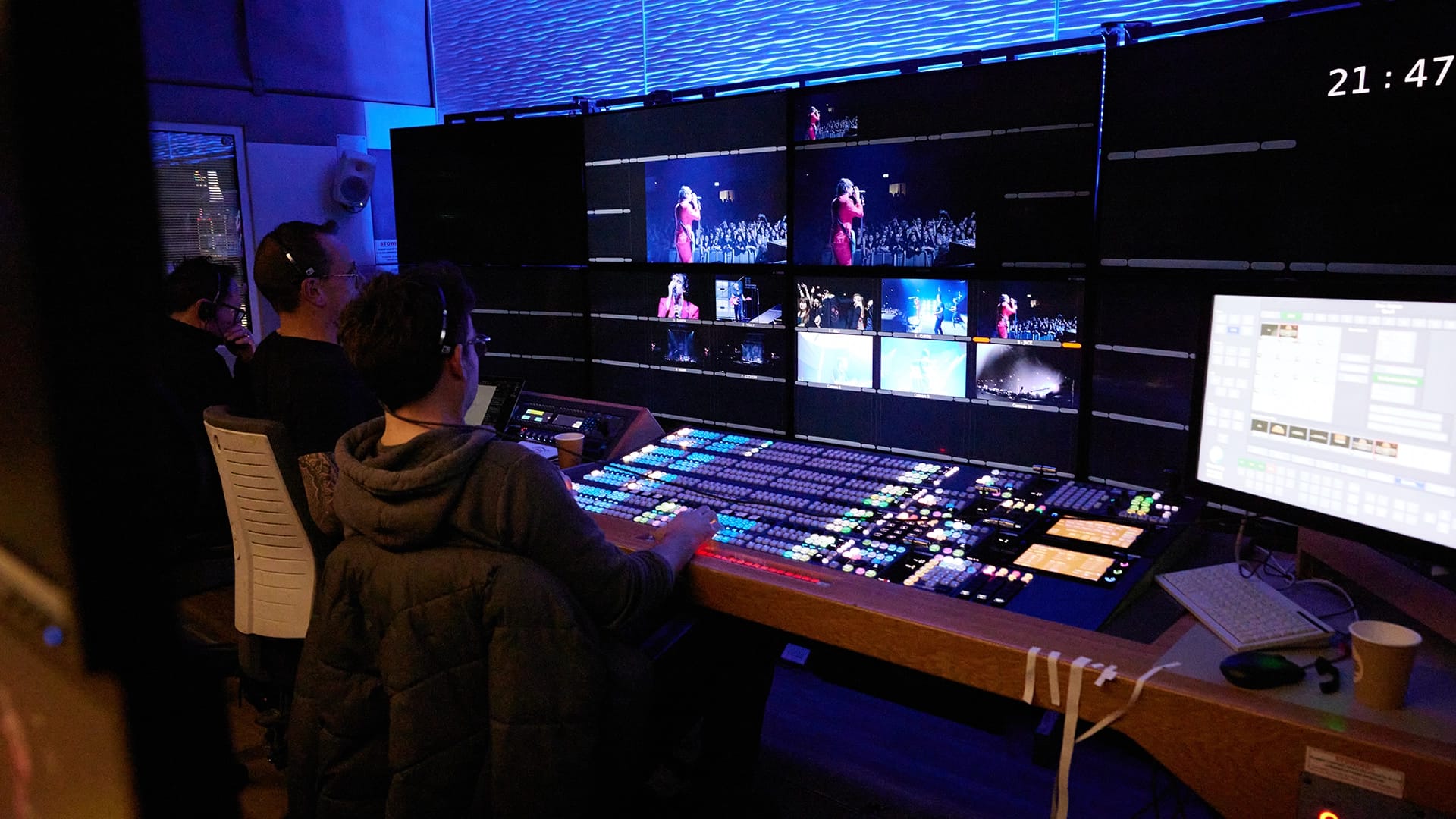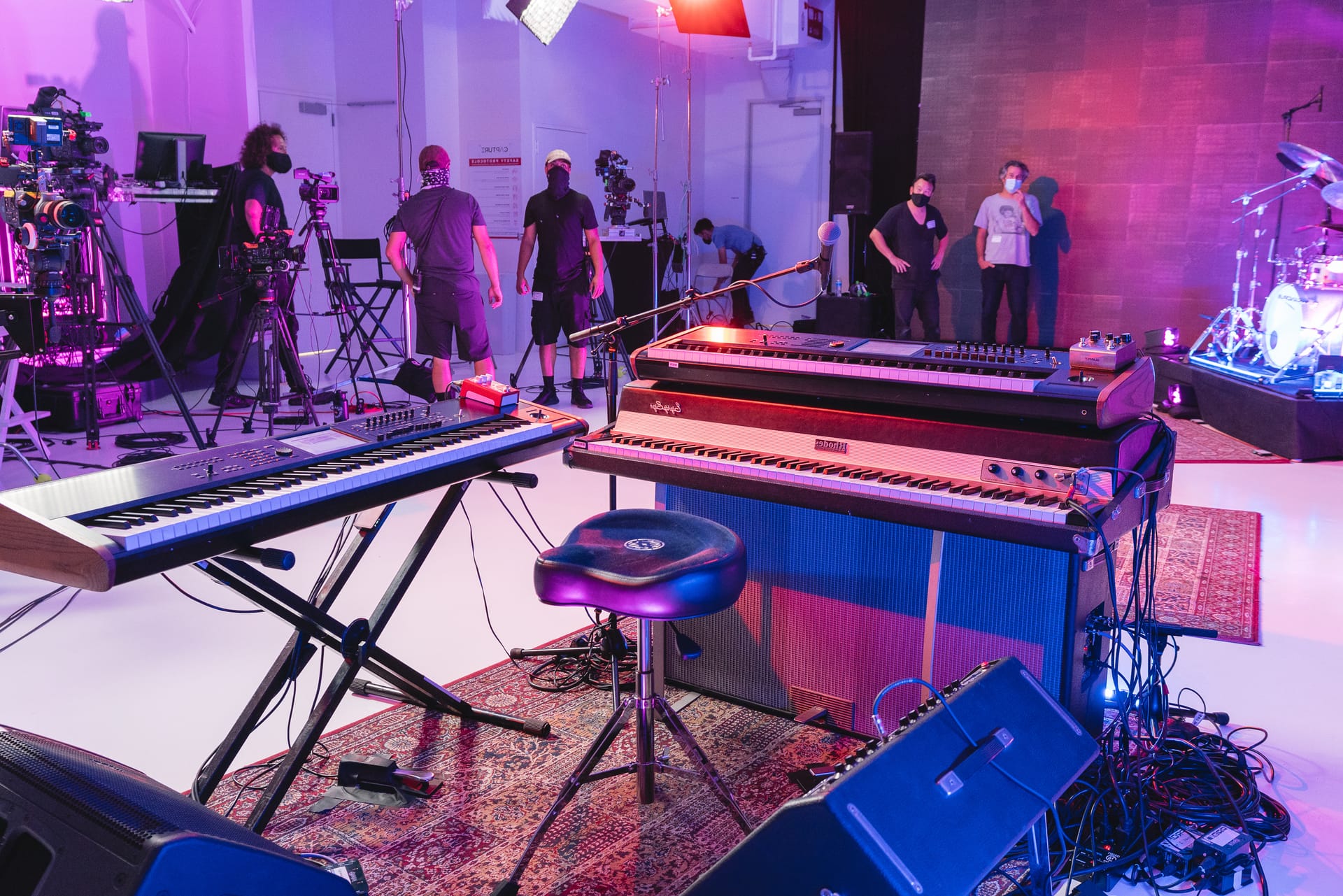From 5.1 to Dolby Atmos: Everything You Need to Know
When transitioning from a traditional 5.1 surround sound setup to Dolby Atmos, you may wonder how much improvement you can expect. Can you achieve a fully immersive, three-dimensional soundscape by upgrading a 5.1 mix?
The answer lies in understanding the difference between remixing for Dolby Atmos and simply upmixing an existing 5.1 track. That’s where On Air’s expertise steps in – here’s our one-stop guide to answering that very question and more.
The Dolby Atmos Difference
Dolby Atmos revolutionises sound design by moving beyond traditional channel-based audio (5.1 or 7.1) and introducing object-based audio. Instead of confining sound to fixed speakers, Atmos allows sound engineers to place single audio elements anywhere in a 3D space. This results in a more dynamic, realistic environment where audio moves with fluidity around the listener.
Take live events, for example; Dolby Atmos can drop audiences directly in the middle of a venue, with voices, instruments, and crowd noise flying around the room from all directions. This level of immersion makes Atmos a game-changer in home theatres, cinemas, or digital streaming.
Remixing vs. Upscaling: What’s the Difference?
Remixing to Dolby Atmos (True Atmos Mix)
A proper Dolby Atmos mix involves an entire audio rework, where engineers completely control how sounds move within the 3D space. Music is positioned spatially for a natural presence. Dialogue can be placed with utter precision – making voices sound like they’re coming from their physical location. Sounds, such as crowd cheers, ambient noise, etc – are placed above, around, or behind the listener.
Say you’re listening to a concert recorded in Atmos; the singer’s vocals may come straight from the stage while the audience surrounds you. Guitar riffs can be placed to pan across the room, and ambient/pop music-related sounds can shift across different speakers (depending on where the producer captured the audio).
Upmixing 5.1 to Dolby Atmos
On the other hand, upmixing a standard 5:1 mix to Dolby Atmos distributes existing audio across additional speakers without changing its spatial characteristics. While it may not offer the pinpoint object placement of a native Atmos mix, it enhances the listening experience by creating a more spacious soundstage compared to 5:1. It expands the audio field to add depth and dimension and utilises height speakers to introduce sound verticality.
For context, if a sports broadcast initially mixed in 5.1 is upmixed to Atmos, the crowd noise feels more expansive, and stadium echoes are subtly enhanced. However, the actual placement of player voices, sounds on the pitch, or commentary won’t be as on-point.
What’s the Best Approach?
If you’re looking for the entire Dolby Atmos experience with true immersion, a native remix is the way to go. This approach allows sound engineers to create a mix that utilises Atmos tech, ensuring a richer, spatially accurate soundscape for live event streams and cinematic releases.
If you simply want to enhance existing 5:1 content, upmixing is a practical alternative. It can still provide a noticeable improvement in spaciousness and depth (appearing more expansive and lifelike) but won’t deliver the same level of precision as the above.
Ultimately, the choice depends on how much transformation you aim for!
Ready to Enhance Your Audio?
You’ve come to the right place! On Air specialises in creating premium Dolby Atmos mixes tailored for live events, concerts, and cinematic experiences. Whether you need to remix your audio from 5.1 to true Atmos or upmix archival content, we’re ready to transform sound for the better. Drop us an email at media@onair.events.

